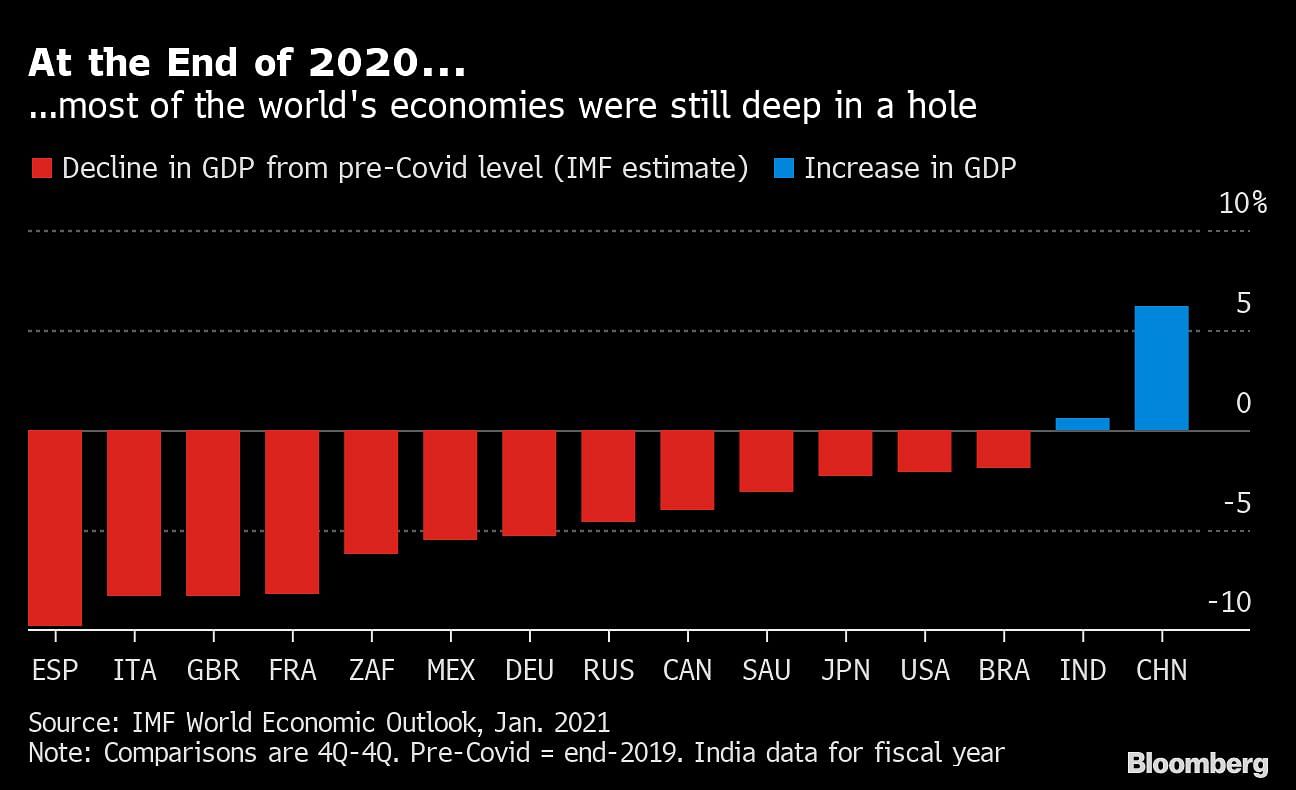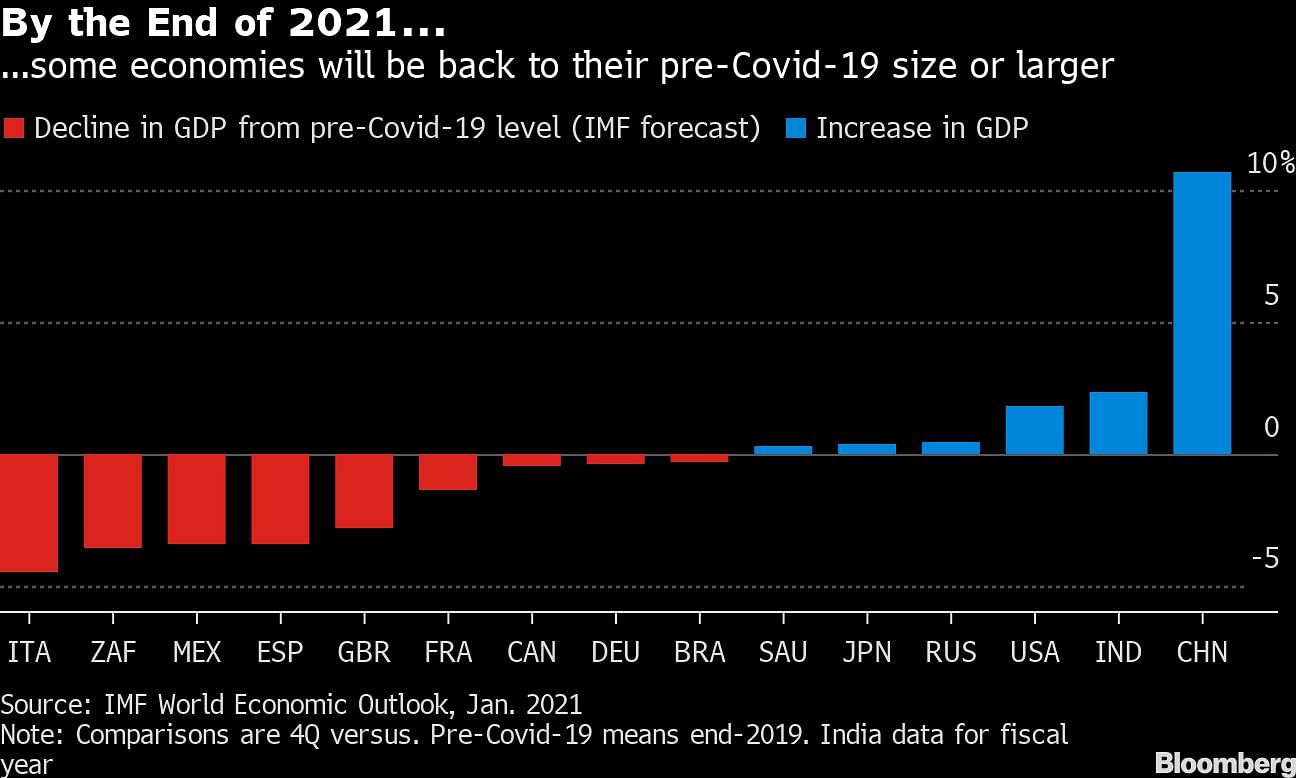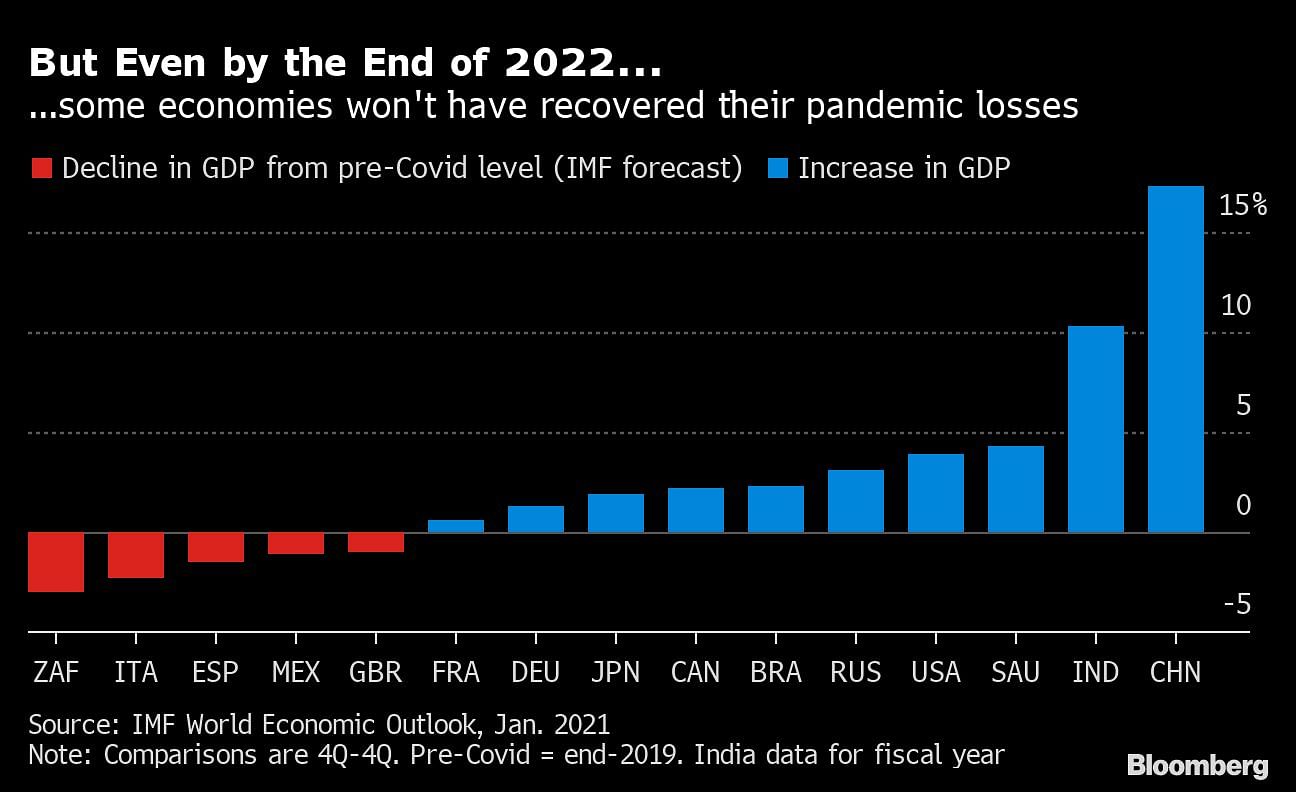Beijing: In China, it’s already happened. The U.S. should get there in the second half of this year. But Italians and South Africans may have to wait until 2023 — or even longer.
Those are the dates when output in some of the world’s major economies will return to the status quo ante-Covid-19 — the level achieved at the end of 2019, before the new coronavirus struck — according to the latest forecasts from the International Monetary Fund. The numbers reveal an uneven global recovery after the worst recession since World War II.

The pandemic has killed more than 2.1 million people, shut down businesses and frozen travel. It’s expected to widen inequality between countries and within them, and may push as many as 150 million people into extreme poverty, according to the World Bank.
China, the first major economy to be hit by Covid-19, was also the first to emerge from the slump. Somewhere around the end of June last year, according to official data, gross domestic product surged back past its pre-pandemic level. By the end of 2022, according to the IMF, it’ll be more than 15% larger. Some forecasters expect China to overtake the U.S. this decade as the world’s top economy.

The U.S. looks set to bounce back fastest among developed economies, helped by one of the biggest infusions of fiscal cash in world history. Annual GDP should pass the end-2019 figure sometime around the middle of this year, the IMF projects. Japan is another wealthy nation that’s recovering fairly well — and with a shrinking population, its performance may look even better when the fund publishes per-capita numbers in April.

The rollout of multiple vaccines has boosted recovery hopes, and led the IMF to raise its forecast for world GDP this year. Still, even under that scenario, economies will generally be smaller than the IMF had expected in its last pre-Covid-19 forecasts, published a year ago.
And in several countries — developed ones like Spain and the U.K., and emerging ones such as Mexico — GDP at the end of 2022 will likely still be smaller than it was before the pandemic. The new IMF predictions don’t go beyond 2022. But based on the forecast growth rates for the last quarter of that year, some economies — notably Italy and South Africa — may struggle to regain their pre-virus growth rates even in 2023.-Bloomberg
Also read: IMF projects 11.5% growth rate for India in 2021, only country with double digit growth






